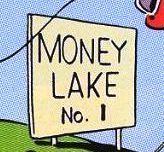Chapter 7:
[Key #7] The Saturation/ Deprivation Proposition: Too Much of A Good Thing Can Be A Bad Thing
“The law of diminishing returns means that even the most beneficial principle will become harmful if carried far enough.”
– Thomas Sowell
“Being too nice can be dangerous sometimes.”
– Unknown
The issues we discussed in the preceding chapters will become even clearer if we look at part of an academic body of work called Rational Choice Theory. Because its straightforward logic is based on the principles of economics, this body of work, and its line of reasoning, was first known as Social Exchange Theory.
One Rational Choice theorist who came up with a set of propositions that helped better understand social interaction is George Homans. In 1964, he wrote a seminal book on the motivation for certain types of social behavior appropriately titled Social Behavior. Homans updated the book in 1974.
Homans’ book contains five guiding propositions to help better explain social interaction. However, only one of the five is relevant to the discussion at hand. Homans’ 4th proposition, the Deprivation/Satiation Proposition, is based on the logic of the economic law of declining marginal utility. Homans’ 4th proposition states that:
“The more often in the recent past a person has received a particular reward, the less valuable any further unit of that reward becomes for him (sic) (italics mine).”
I realize this academic-sounding label may be somewhat confusing. So let’s dive deeper into this idea of the law of declining marginal utility by using everyday language and examples from real life.
Uncle Scrooge Is Saturated With Wealth
The cartoon character Uncle Scrooge would not be too impressed if someone gave him a $100 Dollar Bill. Uncle Scrooge is so filthy rich that a mere hundred dollars doesn’t mean much to him.
In one issue of the comic book, Uncle Scrooge has lakes of money. He has so much of it that we can say that he is saturated with money. In fact, he has too much money for a mere $100 to mean very much to him.
Uncle Scrooge is certainly not poor by any stretch of the imagination. He is not deprived of money. Unlike Uncle Scrooge, I would imagine that a poor individual would sincerely appreciate a $100 Dollar Bill.
Uncle Scrooge is so wealthy, that the lakes containing his money are twenty feet deep.
To most people a $100 Dollar Bill would be greatly appreciated. The reason most people would be so happy to possess a $100 Dollar Bill is because they don’t have very many of them. For the average person, they are hard to come by. Thus, whenever an average person does come into possession of $100 Dollar Bill, they are aware of its precise location. An average person would appreciate its value enough to secure it in a secure location.
A Sponge
Another way to think about the saturation/ deprivation phenomenon is to start by imagining a sponge. A dry sponge (one deprived of water) is able to absorb a larger amount of water. Yet, a wet sponge (one saturated with water) may not be able to absorb much water. Or, if it’s overly saturated with water, it may be unable to absorb any more of it. And since our task is to explain how relationships function, our interest is in what happens to a person in a relationship that becomes saturated with certain types of behaviors.
The Twilight Zone: A Nice Place to Visit
Henry Francis ‘Rocky’ Valentine is a jewel thief who is shot and killed by policemen during a botched robbery. ‘Rocky’ believes that he wakes up in a place, “…where his every wish is granted forever, and ever.” His assigned “guardian angel” immediately begins to grant him anything he desires. At first, the ex-thief can’t believe his luck and is skeptical of his new surroundings. Then he starts to realize that he will be able to spend his afterlife on Easy Street.
At first, this afterlife proves to be everything he’s ever thought such a place should be. ‘Rocky’ is quick to realize just how lucky he is to be able to spend all of his time in the lap of luxury. His every wish is immediately granted as his “guardian angel” caters to his every whim. He is given the finest clothes; a stylish car; and a brand new stereo system. What is more is that stunningly attractive women accompany him everywhere he goes. ‘Rocky’ is even lucky enough that he wins the jackpot of every game he plays at the casino.
After a month of spending his afterlife in a place where he is guaranteed to win at everything, ‘Rocky’ becomes bored by such a “win-at-everything” existence. When he starts to play a game of pool, he hits the cue ball and it causes every ball on the table to find its way into a hole. Surprisingly, ‘Rocky’ becomes infuriated by such “luck.”
In a rage over always winning, ‘Rocky’ demands to know how Heaven could be so boring and miserable. His “guardian angel” replies, “Whatever gave you the idea you were in Heaven, Mr. Valentine?” Henry Francis ‘Rocky’ Valentine is actually in Hell.
Henry Francis ‘Rocky’ Valentine is in a place where he is completely saturated with winning. Perhaps Homans’ Deprivation-Satiation Proposition, combined with the afterlife ‘Rocky’ is experiencing, could be stated as follows: “The more often in the recent past (always) a person has received a particular reward (winning), the less valuable any further unit of that reward (more winning) becomes for him (‘Rocky’)(sic).”
Getting your way seems like a good thing until it happens too often. Attractive individuals who get their way all the time often become bored and miserable. Thus, they begin to chase the individuals who “Say bad things, do bad things.” More than likely they are miserable in a dysfunctional relationship, but they will tell you that at least they are not bored.
In a manner that parallels Uncle Scrooge and his money, certain people are treated so “nice” that they become saturated with such reinforcing behaviors. By substituting the idea of Uncle Scrooge’s money for the idea of “nice” behavior, the saturation process is easy to conceptualize.
A person who is treated “nice” on a regular basis could be thought of as being “nice-rich.” That is, they experience an abundance of “nice” behavior shown to them (they may be saturated by such behaviors). On the other hand, imagine another person as being “nice-poor” because of the lack of “nice” behavior shown to them (they are deprived of such behaviors).
Which one of these persons do you think would likely appreciate being treated “nice”? The one who experiences “nice” behavior at every turn? Or the person who is rarely treated “nice”?
Likewise, which of those two people do you think may take for granted any “nice” behavior they receive? A person who is treated “nice” on a regular basis comes to take such “nice’ behavior for granted. It’s likely that they have been treated so “nice” that they have come to expect and demand to be treated that way. The point is that to these types that have been saturated with “nice” behavior, over time, the more such “nice” deeds tend to lose their value.
In sum, when a person has too much of something, that “something” may come to lose its value. Then again, when a person severely lacks something, they may appreciate that “something,” even when it is only given to them in small quantities.
This example of how saturation/ deprivation works applies to relationships. A person that is saturated with “nice” behavior comes to take it for granted. When a saturated person experiences so much “nice” behavior, it no longer seems “special” to them. Any more “nice” behaviors showed to these saturated types no longer sticks out to them. In fact, under these types of conditions, the only kind of behavior that may catch their eye is the type that is the opposite of “nice.” These saturated types are the ones who will become attracted to the people who “Say bad things, do bad things.”
As you can see from the preceding discussion, Homans’ Fourth Proposition provides us with the logic behind the phenomenon where certain types of people become attracted to the “not-nice” behaviors that we discussed above.
In many of the images of famous actors, fashion models and other popular media personalities, certain physical characteristics are prominent. In cases such as these, physically-attractive types are featured in the ads that are designed to get the product or service noticed in a crowded field of social media vying for people’s attention. These pleasant images are used to draw attention to certain products, news broadcasts, and a host of other socially-mediated activities.
The models featured in social media tend to have a certain “look.” Normally, these people are physically attractive. That is, they have angular body features and are not too heavy; nor are they ugly. Thus, these mass-mediated images of people serve as ideal types. These are the model types that people strive to emulate.
Because these mass-mediated standards of beauty are considerably higher than average, only a limited number of people are actually able to achieve this level of physical attractiveness. As a result, the ratio of “attractive” to “not-attractive” is high. In other words, in our ordinary everyday social interactions, the physically attractive types are the exception to the rule. Therefore, unless we are employed in a business that involves working with models or actors, our day-to-day existence means we normally interact with a majority of average-looking people.
“Through mass-mediated images, Americans are socialized to discriminate in favor of the most attractive people.”
Through mass-mediated images, Americans are socialized to discriminate in favor of the most attractive people. We perceive them as being smarter, more capable and competent, and even having higher morals than those who are not so attractive. Thus, we prefer their attention and put more stake in their validation of us than we do the average-looking types.
Look how many TV commercials there are that try to sell older men products that claim will grow hair on their balding heads. Most of these ads feature a man with his restored full head of hair frolicking in a swimming pool with an attractive bikini-clad woman. The caption in the voiceover says something like, “Regain your confidence…” as if only an attractive female in a bikini is the only type of person who can validate a man’s social image. As a result of this type of socialization, men and women both pursue the attention of the better-looking members of society.
Although the definition of attractiveness has changed over time; and has thus been defined by the standards of each socio-historical period, the logic we discuss in this chapter holds true for any given one of them. The era a person happens to live in will define what the higher standards of physical attractiveness are. And in every socio-historical period, people have discriminated in favor of those who happen to match these physical descriptions.
The above link will direct you to a YouTube video that serves as a good example of what we are discussing. The video shows the stereotype of what a male is willing to do in order to impress an attractive female.
In this video, the actor Michael J. Fox has an attractive neighbor show up at his door asking him if he has a Diet Pepsi he could spare. In the commercial, Fox goes to his refrigerator only to find that the bottle of Diet Pepsi he has in there is completely empty. So in order to impress the attractive woman, he sneaks out his window, and goes through “hell” in order to retrieve a Diet Pepsi for her.
After surviving an ordeal to get his attractive new neighbor a Diet Pepsi, Fox is finally able to offer it to her. But when her equally-attractive female roommate shows up and also asks Fox for a Diet Pepsi, he looks into the camera with a gaze of bewilderment on his face. Such a bewildered look spreads across Michael J. Fox’s face as he ponders what “hell” he will again have to go through in order to impress yet another attractive female.
The above link will direct you to a YouTube video that serves as a good example of what we are discussing. The video shows the stereotype of what a male is willing to do in order to
The above link will direct you to a YouTube video that serves as a good example of what we are discussing. The video shows the stereotype of what a male is willing to do in order to impress an attractive female.
In this video, the actor Michael J. Fox has an attractive neighbor show up at his door asking him if he has a Diet Pepsi he could spare. In the commercial, Fox goes to his refrigerator only to find that the bottle of Diet Pepsi he has in there is completely empty. So in order to impress the attractive woman, he sneaks out his window, and goes through “hell” in order to retrieve a Diet Pepsi for her.
After surviving an ordeal to get his attractive new neighbor a Diet Pepsi, Fox is finally able to offer it to her. But when her equally-attractive female roommate shows up and also asks Fox for a Diet Pepsi, he looks into the camera with a gaze of bewilderment on his face. Such a bewildered look spreads across Michael J. Fox’s face as he ponders what “hell” he will again have to go through in order to impress yet another attractive female.
When an average-looking individual interacts with a better-looking type, they tend to act in a different manner than they would when interacting with another average-looking person such as themselves. That is, average-looking types tend to act “nicer” toward the beautiful types.
An example of this discrimination in favor of the physically attractive types took place in an episode of the TV series Cheers. A common social ritual that occurs when a male meets an attractive woman in a bar is that he often asks the beautiful woman if he can buy her a drink. When the Cheers character Norm is introduced to a stunningly attractive female, he is so impressed with her beauty that he asks her, “Hello, can I buy you a car?”
As you no doubt have figured out from the above discussion, the more attractive a person is, the more likely it is that other people will act “nice” toward them. Treating the attractive types better than the average-looking types generally amounts to someone offering to give them something of value; giving the beautiful person their way; or purposely agreeing with everything they say.
This type of behavior is usually shown to the attractive types in order to impress them. The idea that we can deduce from this type of reasoning is that the better-looking the person is, the more they are given “their way.” In fact, people often compete to give a physically-attractive person anything they desire.
This extra nice or “special” behavior is given to the physically attractive individual with the hope of the less-attractive person making a favorable impression upon them. Average-looking persons feel that if they can impress the better-looking individual, then perhaps the attractive person will enjoy interacting with them. The logic is that the good-looking person will thus want to interact with the less-attractive person again in the future.
In Homans’ view, individuals who are given preferential treatment will likely become so used to it that they will begin to take it for granted. This is precisely what happens when good-looking people experience an unbalanced ratio of “nice” to “not-nice” behaviors.
Let’s dissect and discuss Homans’ Deprivation/Satiation Proposition that says:
“The more often in the recent past a person has received a particular reward, the less valuable any further unit of that reward becomes for him (sic).” (Italics mine)
For purposes of better understanding this phenomenon, let’s change some of the wording in Homan’s Deprivation/Satiation Proposition. To make a point, let’s substitute the words “a particular reward” and “that reward” with the words “nice behavior.”
“The more often in the recent past a person has received “nice” behavior, the less valuable any further unit of “nice” behavior becomes for him (sic).”
Once good-looking people become saturated with “nice” behaviors, such deferential treatment will become expected during any future social interaction. Thus, to the attractive types, such “nice” behavior will likely become common place and mundane, and it will lose much of the special meaning it once may have had.
“It is when the nice behavior isn’t elicited toward these saturated types that they take special note of it.”
Put succinctly, the negative aspects of this “be-nice-to-beautiful-people” phenomenon occur when these types reach the point of becoming saturated with such “nice behaviors.” When saturation occurs, these types will start to take notice of actions that they experience less frequently: namely “not-nice” behavior.
Put another way, when a person experiences an over-abundance of reinforcing behaviors (nice), soon non-reinforcing behaviors (not-nice) begins to stick out to them. In fact, it is when the “not-nice” behaviors are elicited toward these saturated types that they will take special note of them.
Before we proceed any further in the discussion, let me get something straight. I don’t mean to infer that the saturated types only become attracted to people who treat them “mean.” There are a range of “not-nice” behaviors to which a saturated person can become attracted. They range anywhere from a mere indifference to downright mean and abusive.
An example that comes to mind is neutral behavior (indifference) that is neither “nice,” nor “not-nice.” Such behavior exists somewhere in the middle of these two opposing behavior types. This neutral behavior isn’t “nice” behavior, yet neither can it be considered to be “mean.” Thus, it will still be contrasted with “nice” behavior and it too is likely to catch the eye of a saturated person. My point is that in these cases, since neutral behavior isn’t considered “nice,” it is also likely to catch the eye of these “nice-saturated” types.
The saturation phenomenon isn’t static in nature. On the contrary: saturated types become attracted to behaviors relative to their saturation level (low, medium, or high). Persons saturated by lower levels of “nice” behavior, tend to become attracted to low-levels of “not-nice” behaviors.
In a similar manner, the types affected by medium-levels of saturation of “nice” behaviors tend to become attracted to medium-levels of “not-nice” behaviors.
Highly saturated types are likely to become attracted to high-levels of “not-nice” behaviors. In these cases, the highly-saturated types often become attracted to the “not-nice” behaviors that may include more intense mental abuse or even overt physical violence. People experiencing this level of high saturation often tolerate incredulous amounts of emotional and/or physical abuse.
Let me be clear on this point. I’m not implying that all physically attractive people automatically become saturated with any “nice” behaviors elicited toward them. My point is that the more society socializes its members to discriminate in favor of the physically attractive types, the more likely these nice-looking types stand the chance of becoming saturated by such “nice” behavior. Remember, this is a generalization. There may be some exceptions to the rule, but in most cases, the logic stands.
Other social types can also become saturated by reinforcing behavior(s). We also give special treatment to celebrities, politicians, wealthy entrepreneurs and other social dignitaries. In these cases, such behavior isn’t necessarily related to their physical attractiveness. Rather, these types may still be afforded special treatment for a different reason. Thus, it is also possible for these celebrity types to become saturated by such favorable treatment. But for purposes of our discussion of relationships, the issue of saturation we are interested in varies most closely with one’s level of physical attractiveness.
On a similar note, many students hear me say that in order to gain the attention and affection of attractive types, the pursuer must treat them cruelly. Oh contraire, I do not suggest that anyone be mean or engage in any type of malicious behavior.
My point is simply that when someone is pursuing an attractive type, they shouldn’t necessarily put them on a pedestal like the rest of their competition does. Doing so likely increases the chance that the attractive person will become even more saturated by such behavior. And once this happens, the attractive person will then take the most recent nice person for granted like they do others who treat them nice. And once saturation occurs, it is very difficult to reverse its course.
I should also mention to the reader that all abuse is not related to the satiation/ deprivation phenomenon. Some abuse is caused by other factors, such as chemical imbalances, insecurities on the part of others, narcissistic personalities, etc. Please do not assume that saturation effects are the only causes of abuse in relationships.
Before we conclude this chapter, I want to comment on a phenomenon related to saturation effects. We often comment to those who are attracted to abusive partners, “Just leave the jerk.” Like being able to breakup with an abusive partner should be easy. After all, who is supposed to be attracted to jerks?
But until others who interact with these highly-saturated types also stop putting them on a pedestal, these saturated types will continue to remain saturated by “nice behavior” shown to them. So, even if they were to breakup with one jerk, these saturated types would still be attracted to another jerk.
Saturation is a group phenomenon and thus, it isn’t the result of just one person’s behavior. To the saturated types, the “nice” behavior will continue to contrast with the “not-nice” behaviors. Since the “nice” treatment will still continue to occur at in larger amounts than the “not-nice” behavior, the “not-nice” behavior will be rarer and thus, it will stick out to these saturated types. In plain language, even if a saturated type leaves their abusive partner, the rest of society will continue to shower the beautiful people with “nice” behavior.
The saturation phenomenon then, affects more than just the two partners in a relationship. Outside forces that are independent of the couple also affect the overall saturation phenomenon. For instance, if a myriad of people shower reinforcing attention on any of the partners in a relationship, that partner is likely to be affected by any related saturation effects; independently of the actions of the partner they are paired with. Or put differently, no matter how someone treats a person, they cannot completely control how others will interact with that person. Simply put, other people may be the cause of saturation effects in your partner, independent of any of your behaviors.
Does Anyone Know What Spore-ah-dack-ally Means?
Remember in the Introduction chapter when I mentioned that I had met a cool guy friend during my first weeks at college? I said that he and I immediately hit it off. And from there, we proceeded to talk about everything under the sun. Well, this story involves that same guy who helped me research relationships. For this story, his name is Randy.
Although I was somewhat “rough around the edges,” the fact that I was dating such a strikingly beautiful woman gave me some immediate “dating cred.” Thus, I didn’t have to try to impress Randy with talk about how I had the skills to meet any good-looking college coeds. I didn’t care about any such bravado. I was already in a serious relationship, so talk about dating other women was a mute point.
From the first day we met, I could tell that Randy was willing to think “outside the box.” He realized that despite the commonly held assumptions about women, sometimes one needed to defy convention in order to be successful with them. So when my new buddy sought out my advice on how to meet one of the best-looking coeds on campus, I was excited to assist him.
At the beginning of Randy’s quest to get the attention of a former model named Lou Ann, I made him three “deals.” First, I agreed not to meet this strikingly beautiful coed he was interested in, that way I wouldn’t have a bias my opinion of her. I had already heard about her from various sources on campus, but she and I had never personally interacted. Evidently, she had modeled in New York, earned a college scholarship in the process, and then had chosen our university to pursue her bachelor’s degree.
Second, Randy would have to agree to follow any advice I gave him. And he had to follow it to the letter. He could ask questions about what our strategy involved, but in the end, I was the coach and he would have to agree to follow my over-all strategy.
Third, Randy would have to report on his “progress” with the former model at least every third day. Randy agreed to these conditions, and the games began.
Since the art of seduction is strategic in nature, any details Randy could provide me about his interactions with Lou Ann would be of utmost importance. I would use the information he provided to me in order to formulate a strategy to get him to meet her. I wanted to know things such as: Who starts conversations? Who ends them? Does anyone interrupt? Does he have regular access to her?
The answers to these questions would provide us with strategic, as well as tactical information about the power dynamics involved with the type of relationship they had (e.g. just friends, more-than-friends etc.). Thus, anything I could glean from his interactions with Lou Ann would play a significant part in determining what type of approach he would have to use to get her interested in pursuing a relationship with him. Such information would also provide the feedback necessary to make any changes to any particular game plan that needed tweaking.
The first detail I needed to know was the context of Randy’s and Lou Ann’s relationship; under what social conditions did he know her? Randy told me that he and Lou Ann were in the same business course together. I thought that was great news. Randy would have regular access to Lou Ann’s attention.
I also needed to learn about the details of their classroom interaction. I asked Randy to draw a diagram of the classroom where they met, and his proximity to her during class. He produced a rough sketch of the room which showed me that the classroom had large tables which seated 3 to 4 students per table. In all, there were twelve tables in the room; three abreast by four deep with the instructor situated at the front of the center row.
Randy told me that Lou Ann normally sat at the second table back on the right. He, on the other hand, sat at the third table on the right directly behind Lou Ann. Obviously he positioned himself at the table behind her in order to gaze at her during class. I asked him whether or not any other guys in the class sat in any of the nearby chairs with the same intention of checking out Lou Ann during class. “Of course they do!” he replied, surprised that I had even asked such a question.
The first task at hand then, was to get the beautiful coed to notice Randy. From my way of looking at the situation, I figured that he needed to stick out from among her many “admirers.” My hunch was that the other males in the class were also ogling Lou Ann, letting her know how pretty they thought she was. After all, what guy could possibly resist looking at her beauty? How I figured it, Randy would have to be the one who could resist.
Since Lou Ann was stunningly attractive, I had to deduce that she was likely saturated with “nice” behavior. Therefore, advising Randy to act in a reinforcing manner and be overly “nice” to Lou Ann would have been counterproductive. His interaction with her would have to be anything but “nice.” Remember now, there are several gradations of “not-nice” behaviors to utilize. And under no condition did I have any intentions of advising him to be mean to Lou Ann; just not to act “nice” to her.
After careful contemplation, I came up with a strategy designed to make Randy stand out to Lou Ann. I instructed Randy to sit at the back table on the left side of the classroom. I also suggested that he do everything in his power to avoid looking in her direction for any length of time. I figured that if Lou Ann caught Randy directly gazing at her, in her eyes, he – like every other guy in the room – would be just another admirer of hers.
Randy was obviously perplexed by this advice and asked me, “How is it going to help me meet Lou Ann if I’m seated so far away from her?” My logic was simple. Instructing Randy to sit in that location at the back of the room stemmed from the fact that Lou Ann was extraordinarily beautiful and was probably used to receiving the attention of most of the guys around her. I figured this type of attention (men checking her out) was a normal part of her day-to-day reality. Thus, Randy would have to do something out of the ordinary in order to catch her eye. I felt that he could do this by not looking at Lou Ann. Despite Randy’s initial skepticism, he followed the plan to the letter.
Next, I instructed Randy to figure out whether or not Lou Ann was reacting to his efforts to avoid looking at, or interacting with her. This would prove to be a tricky endeavor. After all, Randy would have to look in Lou Ann’s direction to make this assessment. Thus, I instructed him to look in her direction, but to do so only at irregular intervals, and only by using his peripheral vision.
Like I said before, in Lou Ann’s mind, if she even inadvertently caught Randy making any kind of eye contact, she would perceive him as just another guy checking her out. And if he got caught looking directly her, to Lou Ann, he would be just another mesmerized admirer of hers. Randy was extra careful in this endeavor, and only sparingly checked Lou Ann’s response to his strategy to not act like all the other guys in the classroom.
In Randy’s reports on his progress with Lou Ann, he mentioned how he had noticed Lou Ann glancing over in his direction. It hadn’t taken long for this seating-arrangement approach to begin to have its desired effect. Lou Ann was beginning to notice his seeming indifference to her. In a classroom full of admiring men, Randy was the only one that appeared to not be checking her out. It probably helped Randy that the other guys seated near Lou Ann where not making it any secret that they were gazing at her.
The other guys in the class were taking a conventional yet less-effective approach to catching Lou Ann’s attention – namely not hiding the fact that they were directly staring at her. The guys in the class that had absolutely no chance of dating Lou Ann didn’t have any problem gazing at her stunning beauty.
Not long after Randy started noticing Lou Ann noticing him not noticing her, he arrived for another meeting with me. On this particular day, however, he was very excited and he had a grin that stretched across his face. His unusual enthusiasm immediately piqued my interest and I asked him what had happened for him to be in such a great mood. Obviously he knew something. And something this good could only have been positive.
Randy told me that the instructor had assigned the students in the class into groups. The groups would be working on a month-long class project. The professor had randomly assigned Randy and Lou Ann to the same discussion group. This was great news. I remember thinking to myself, “There must be a God!”
Women normally size up men’s motives for interacting with them by assessing the manner in which these men approach them. Because it was the professor who assigned Randy to the same group as Lou Ann, she could not assume anything about Randy being in her personal space. After all, the group members were required to interact with one another during the class project. When all was said and done, Randy had not gone into Lou Ann’s space of his own choosing; the professor had assigned him to a group that included her. Randy was now able to interact with Lou Ann on a daily basis without her being able to assume that he had any ulterior motive (although he did).
During this same meeting, Randy was acting impatient and he kept asking me what he needed to do next. I told him that despite his license to interact with her on a more frequent basis, he should try and limit how long he interacted with her. So my advice to Randy was to keep his interactions with Lou Ann mostly to do with official school business.
I also instructed Randy to be the one to break off the contact whenever he did have to interact with Lou Ann. This way he would avoid tipping her off to his true intentions by acting “clingy” like many other men would have when interacting with such a beautiful woman.
As the plot began to thicken, I could tell that Randy was biting at the bit to move this “situation” along. He was becoming impatient with my advice to proceed at such a slow pace. However, I kept telling him that he had gotten this far by listening to my advice and to remain patient. I told him that the payoff would be worth the wait. My next task was to do something to change the personal dynamics between Randy and Lou Ann.
Simply put, my intention was to have Randy avoid putting the beautiful coed on a pedestal, as most guys on campus did. As a result of doing just that, the other guys in the class had in effect, surrendered any power they may have had by staring at her and constantly trying to please her (remember gist of The Principle of Least Interest).
My intention then was to have Randy make Lou Ann feel a little bit self-conscious about her self. This was something no other guy would even contemplate doing. But remember, Randy would have to have an unconventional approach to catching Lou Ann’s eye.
Conventional thinking would probably believe that pissing off such a strikingly beautiful individual would reduce the chance of that attractive person giving the perpetrator more of their attention. I thought otherwise. Plus, I had a hunch.
Accomplishing the task facing Randy would unfold in a three-stage process. I first told Randy to find some sort of flaw with Lou Ann.
After he did that, I told him to make sure to bring that flaw to her attention. That way there would be no doubt about what he was doing: focusing his attention on her flaw.
Finally, I told Randy that once Lou Ann fully realized that he had noticed a flaw with her, that next, he needed to milk the occasion for everything it was worth. Randy looked at me with utter amazement. I imagine that he had no clue about the logic involved with the plan. Randy left that meeting a willing student, but I could tell that he was somewhat reluctant to completely trust this new strategy.
Again, the purpose of the plan was for Randy to make Lou Ann feel self-conscious. He would do this by pointing out a flaw of hers. It could be anything really. After all, Lou Ann was human and would have flaws like any other human being.
At our next meeting, I asked Randy what flaw he had found with Lou Ann. Randy told me that despite his best efforts, he could not find a flaw with Lou Ann. He kept on insisting that she was perfect. He told me how perfect her hair was. He told me how perfect her skin complexion seemed.
I reminded Randy that Lou Ann was only human. Thus, I insisted that he keep looking for any flaw of hers. As I continued to insist that Randy find such a flaw with Lou Ann, he would always shoot me a confused look. However, I could sense that he was still motivated to accomplish the task at hand. After all, my advice had proven to work to this point. Hence, despite any misgivings Randy had about my unconventional approach he should use to meet Lou Ann, he stayed on task.
It was during a classroom reading exercise that Randy’s patience and persistence paid off. While the group was reading a business case study, he used his peripheral vision to keep an eye on what Lou Ann was doing. Randy could see that something was bugging Lou Ann. First, Randy saw Lou Ann frown. Then he saw her furrow her brow with an intensity that told him she was confused about something. Shortly thereafter, Lou Ann asked the group, “Does anyone know what spore-a-dack-uh-lee means?”
Inside Randy was elated! Finally, he had discovered a flaw with Lou Ann. He jumped at this opportunity and politely asked Lou Ann to clarify her question. Again she asked the group, “Does anybody know what spore-a-dack-uh-lee means?”
Turning the questioning around on the beautiful coed, Randy asked her, “Do you mean sporadically?” Lou Ann again furrowed her brow as she thought about the word she had been unsure of. Embarrassed, Lou Ann suddenly realized how her question must have sounded to the group. Two tasks down; one task to go.
Randy knew the next thing he needed to do was to milk the flaw for everything it was worth. He teased Lou Ann by saying, “Spore-a-dack-uh-lee, spore-a-dack-uh-lee. Lou Ann, are you serious? How did you come up with that word?”
Lou Ann was indeed embarrassed and tried in vain to “play it off;” acting as though she had meant to pronounce the word that way as a joke. But Randy kept bringing it up and making light of the situation; much to the chagrin of Lou Ann.
Not long after this interaction took place, the class let out. As Randy and Lou Ann were leaving the classroom, he put in one last verbal jab. As they were walking out of the classroom, Randy told Lou Ann, “See you tomorrow Ms spore-a-dack-uh-lee.”
Later that night, Randy could barely contain his enthusiasm as he recounted this classroom incident to me. I could hear his voice change as he bugged me to tell him what I wanted him to do next. I instructed Randy to be patient; that we first needed to know how Lou Ann would act toward him the next time they interacted.
The next day at class, Lou Ann purposely sat next to Randy and immediately attempted to strike up a conversation with him. And in order to show Randy that she wasn’t actually such a dimwit, Lou Ann immediately struck up a conversation with him.
In order to keep her somewhat off balance, I had instructed Randy to let the previous day’s incident go. Yet, I also told him to keep up a less intense grilling about the incident.
After that initial incident, Lou Ann attempted to initiate further interactions with Randy in an effort to prove her wit and intellect. Before long, she even began offering him rides home from campus. Although Randy continued to tease and joke around with Lou Ann, I had instructed him to taper off the teasing and to ease into a lighter yet more serious approach.
At that point in the plan, I told Randy to make a concerted effort to actively listen to what Lou Ann had to say. After all, Randy did have a genuine interest in getting to know more about her. I told Randy to find out what her hobbies were. He asked me what her hobbies had to do with the plan. I told he that in order for him to learn what her hobbies were, that he would have ask her more in-depth questions about herself.
One night, about three weeks after his initial encounter with Lou Ann, Randy showed up at my dorm room. He knocked on my door with a little more enthusiasm than usual. When I answered the door, I noticed that Randy had a bottle of champagne and two glasses in hand. He was full of excitement and quickly uncorked the bubbly.
Randy began to tell me the details of how his evening had unfolded and how he and Lou Ann had gone for a drive after meeting at one of the local college bars. They had driven to the park and ended up kissing. Randy kept smiling as he related the details of the incredible encounter.
As the champagne began to take effect, Randy confessed to me, “You know, when we first began to plan this little adventure, I honestly thought you were full of crap.” I didn’t take offense to his remark however. Instead, I just smiled and pictured what must have happened between my friend and this strikingly good-looking coed. To tell the truth, I was just as surprised as he was. After all, the entire time I had just been acting on a hunch.
The cool ending to this story is that Randy and Lou Ann genuinely hit it off. In fact, after they both graduated from college, they ended up getting married. Randy and Lou Ann eventually had two beautiful daughters, and their marriage is still going strong to this day. In fact, they have recently welcomed a beautiful grandson into their fold.
I venture to think that had I not instructed Randy to approach Lou Ann in the manner that I had, would they have ever been able to enter into a successful relationship? In other words, had Randy approached the strikingly-beautiful Lou Ann in the same manner as the rest of the men infatuated with her beauty had, would she have even given Randy the time of day? We will never know. But I do know that this approach reinforced my hunch that relationships aren’t as simple and straight-forward as most people would like to think. Sometimes it takes an unconventional approach to get the desired results that seem to defy conventional logic.
Take away points:
– The numbers of individuals who match the mass media’s criteria of social beauty are relatively rare.
– Under normal circumstances, we interact with more average-looking types than we do with the more attractive types.
– Our interaction scripts are different for non-attractive types than it is for interaction with attractive types.
– We tend to discriminate in favor of attractive types (treating them “nice” is done with the aim of pleasing the attractive other, and thus hoping to spark a desire for further interaction).
– As a result of such social discrimination, good-looking types tend to experience an unbalanced ratio of “nice” to “not-nice” behaviors. Thus, such beautiful types experience considerably more “nice” behavior than “not-nice” behaviors. When this balance or ratio differential is tipped, the saturated-types on the receiving end of the “nice parade” tend to become saturated with such “niceness.”
– When the attractive types become saturated by “nice,” they begin to take it for granted.
– Once these “nice” behaviors become taken for granted, they are no longer considered “special.” That is, they no longer stand out from ordinary behaviors.
– When “nice” behaviors no longer catch a saturated person’s eye, the opposite type of behavior (“not-nice”) begins to stand out to them. That is, the “nice-saturated” types will begin to notice “not-nice” behaviors (e.g. those who, “Say bad things, do bad things.”).
– There are a range of “not-nice” behaviors to which a saturated person can become attracted. They range anywhere from mere indifference to malicious and overt mental as well as physical abuse.
– The saturated types will become attracted to “not-nice” behaviors according to their personal saturation level (low, medium, or high).






